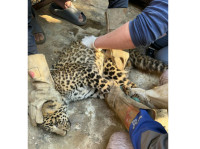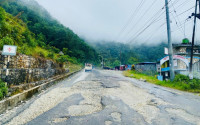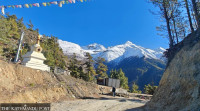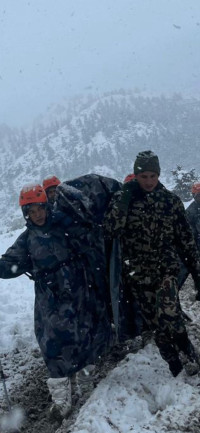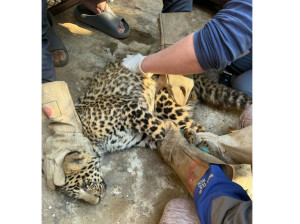Gandaki Province
Gorkha farmers struggle to protect crops from wildlife
Although there are policies in place to compensate for human and livestock losses, there are no provisions to provide relief for crop damage.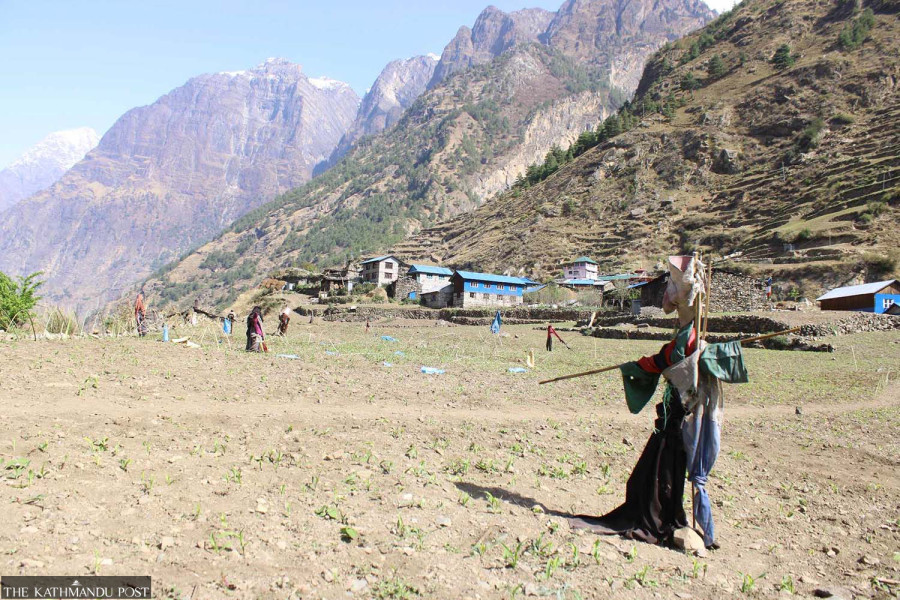
Hariram Upreti
Chhewang Lama has lost a lot of maize from her field over the past decade due to the frequent intrusion of wild animals.
“Every year we face the same issue,” said Chhewang, a resident of Prok in Chumnubri Rural Municipality-4. “Bears are abundant here and they eat up all our crops.”
This area in northern Gorkha, which experiences only one farming season in a year due to its altitude and climate, is grappling with the growing menace of wildlife of late.
“Many households have given up farming altogether because they are unable to protect their fields,” Chhewang added. “Some fields are now left barren and turning into forest land.”
The problem has worsened over the past decade, local residents say, with wild animals such as bears, monkeys, deer, gorals, tahrs and Himalayan blue sheep increasingly invading the farms. In this high-altitude region of the northernmost rural municipality Chumnubri, locals have tried various methods to protect their crops like wheat, barley, millet or maize. They hang scarecrows and old clothes in their fields in hopes of deterring the animals. These methods, however, have proved largely ineffective lately.
Tsering Lama, a farmer from Bihi in Chumnubri-5, expressed similar concerns. “The crows start attacking the maize from the very day it is sowed,” she said. “Later, deer, gorals and other animals enter the fields as the crops grow. By the time it ripens, monkeys take over.” In desperate attempts to protect their crops, some locals even sleep in their fields during harvest time.
“This region doesn’t grow paddy,” said Tsering. “We cultivate potatoes, beans and maize. But in some years, we end up harvesting only two to four baskets of maize. The rest gets eaten by bears. When we can’t harvest enough from our own land, we are forced to buy food.”
Local farmers complain that mainly the monkeys during the day and bears at night intrude into their farmlands and destroy the crops. Sonam Lama, another resident of Chumnubri-5, noted that the attacks come both day and night. “It takes nine months for a single harvest and even that is often lost to wild animals. We’ve complained to the Manaslu Conservation Area Project (MCAP) several times. We’re not asking to kill the animals, but there must be a way to scare them off,” said Sonam.
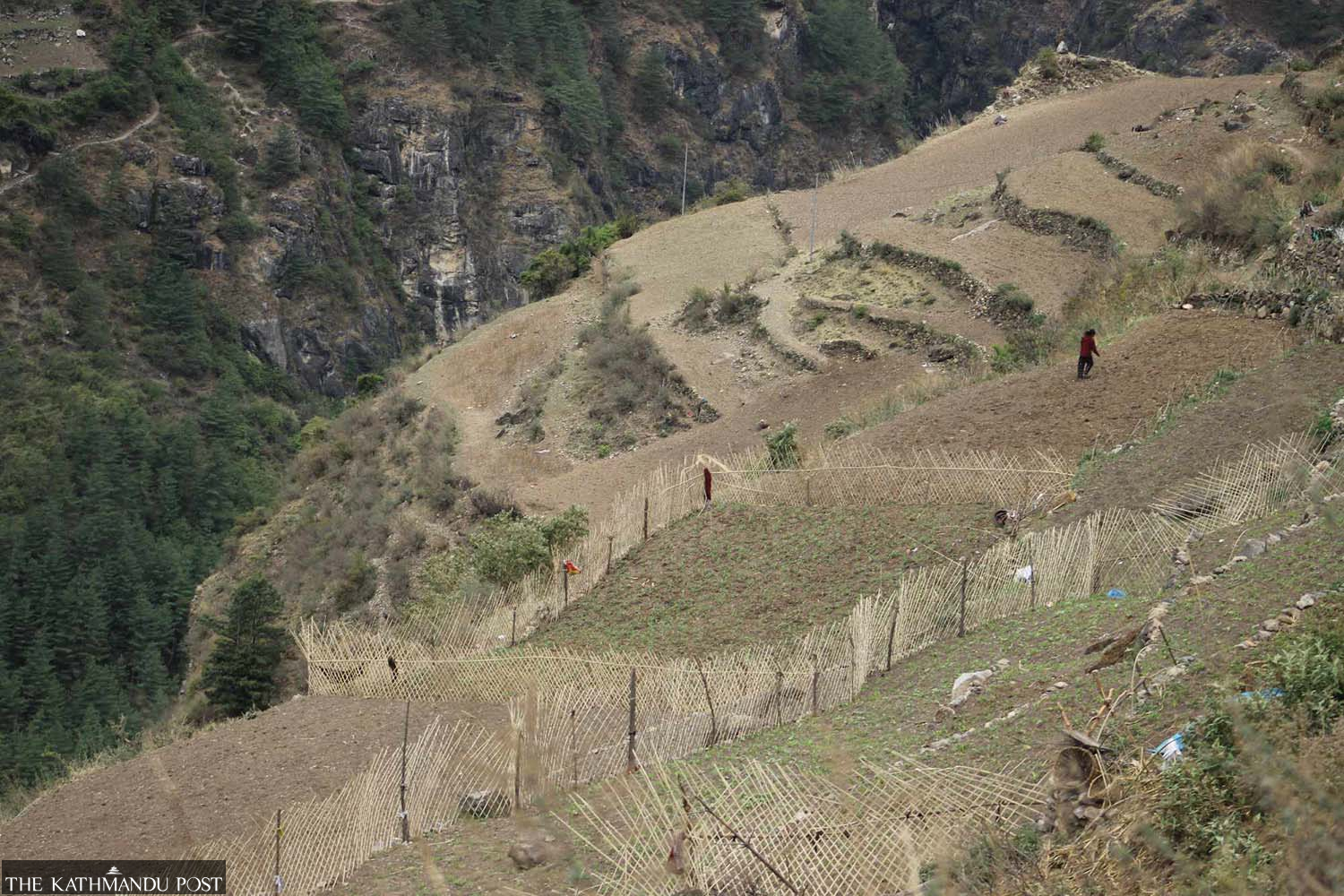
In some areas like Prok, wire fencing has been installed around arable land to keep the animals out. About 3.2 kilometers of such fencing was built, and some were equipped with solar-powered electric currents to mildly shock intruding animals. Despite these efforts, the problem persists.
“Even with fences, the animals find ways in—either by burrowing underneath or jumping over,” said Chhewang. “We can’t fence every plot due to limited budgets, and many fields remain unprotected.”
The increasing intrusion of wildlife has also led to human-wildlife conflicts in settlements. In Samdo of Chumnubri-1, wild animals have reportedly attacked domesticated animals like yaks that were taken for grazing in alpine pastures.
Villagers of Chumnubri area say that they have had a tough time protecting their domesticated animals from the wild animals over the past few years. The wildlife—mainly snow leopards, wolves and brown bears—have been wreaking havoc in the area. They enter the human settlements and pasture lands and kill horses, yaks and chauris.
According to the MCAP, the wolves killed 53 livestock, snow leopards killed 23 livestock and five others were killed by bears in the Chumnubri area in the last fiscal year of 2023-24.
Manaslu Conservation Area, which covers an area of 1,663 square kilometres, is situated in the Chumnubri area. It is the habitat of 33 species of mammals—snow leopard, grey wolf, musk deer, Himalayan tahr, brown bear, blue sheep, Himalayan goral, and Asian black bear, to name a few.
Santosh Sherchan, chief of the MCAP, acknowledged the issue. “We did install wooden poles and fencing in some areas of Prok, but locals now say they aren’t effective anymore. Many of those wooden poles have decayed over the years,” he said.
Although there are policies in place to compensate for human and livestock losses, there are currently no provisions to provide relief for crop damage. “If we could allocate internal budgets for crop loss as well, it would have helped farmers tremendously,” said Sherchan. “But unfortunately, there’s been no concrete decision on that front yet.”
The farmers of Chumnubri continue to face significant hardships as they struggle to safeguard their limited harvests from wildlife. Without more effective and sustainable measures, their food security and livelihoods remain at risk. Crops like wheat, barley, buckwheat and potato are grown in the northern villages of Gorkha but the local production is not enough to feed the population.




 16.12°C Kathmandu
16.12°C Kathmandu.jpg)
